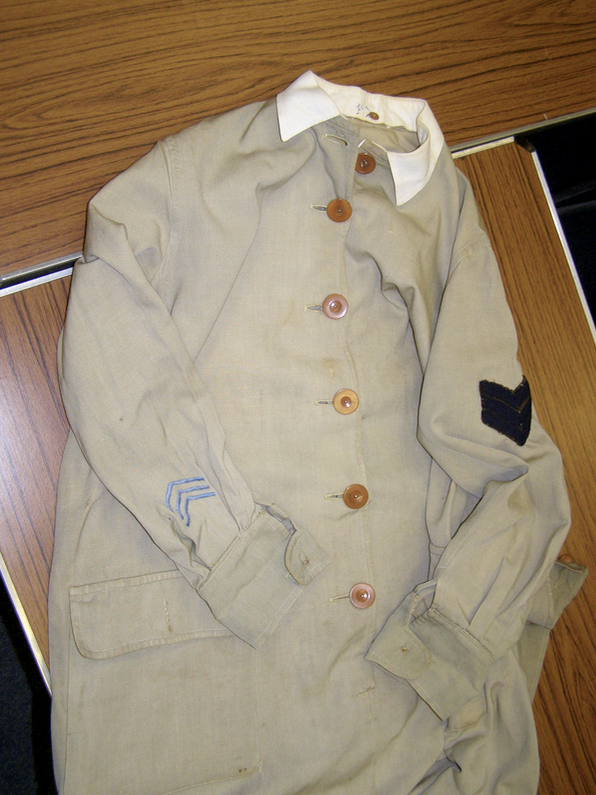Winifred Mary Wilcox was born in Condover a few miles to the south of Shrewsbury in Shropshire. He parents were Edward and Edith Mary Wilcox. Her father was an Agricultural Labourer. In 1906 Winifred’s father died and the family moved to Liverpool where they took a house at 78, Macdonald Road, Wavertree. The 1911 Census shows that Winifred’s 26 year old brother John was the head of the house. His job as an insurance clerk enabled him to support his wife, mother and other members of the family.
On leaving school Winifred did a variety of work as a farm worker, dairymaid and even a tram conductor but when the war broke out she joined the shipping company Bibbys in Liverpool. Like many firms during the Great War they changed their role to making munitions.
By 1916, especially after the disastrous Battle of the Somme, army recruitment was slowing down and the Government became to consider the role of women. In 1917 the Women’s Army Auxiliary Corps. (WAAC) was established and a recruiting campaign started. Within days Winifred had left her job as a munitions worker and was one of the joined them. She was 20 years old.
Winifred was issued with a light khaki uniform dress and sent down to Hastings to be trained. She recalled marching up and down the seafront at Hastings but within six weeks she had been sent to France. Winifred would have been one of the first women to arrive in France. The first contingent arrived at the Western Front on 31st March 1917. They were under the command of Assistant Controller Helen Gwynne Vaughan. Vaughan was a botanist (two species of mushroom are named after her) but a skilful organiser despite the reservations of many men. She wrote “I discovered that objection to the employment of women was almost universal…men mistrusted the complications which women might entail and disliked the intrusion of this alien element”
Young Winifred was posted to Pont de L’arche a few miles south of Rouen. Her official title was a ‘Storeswoman’ but ended up working in a variety of different occupations, often assisted by German Prisoners of War. She recalled that these were hard times, rations were meagre and they were often very hungry. She said that some maggot ridden biscuits were so hard they had to be broken up with a hammer. Her billets were cold and icy.
Later in 1917 some WAACs who had returned back to England were dismayed to find press reports accusing them of scandalous behaviour. They received the support of the Queen and in July 1917 the unit was renamed Queen Mary’s Army Auxiliary Reserve.
At one stage Winifred was posted to Etaples, near Le Touqet on the French Coast. Etaples was a casualty clearing area for the Front Line and Winifred worked in a hospital there for six weeks. Trainloads of wounded soldiers would arrive on stretchers in trains . She never forgot the pain, suffering and misery she witnessed.
On 7th October 1918 Winifred transferred to the Women’s Royal Air Force where she worked as a storekeeper at an engine repair shop. She was still located at Pont de L’arche but had a tiring and dirty job handing out, often heavy, spare parts for four different types of aircraft engines. She lived in a hut with 19 other girls. It had beds down one side and trestle tables down the other. The day started at 5.30 and after a hut mug of tea for breakfasted the girls marched into work. However there was one good thing about the posting. It was in that she met her future husband Arthur Mandeville.
Arthur was from Brighton and lived in Hollingbury Park Avenue, Brighton with his parents (His father was a retired Police Officer) The 1911 census shows him as a 17 year old ‘Motor Tyre Repairer’ but on the outset of war in August 1914, he joined the Royal Flying Corps and was posted to France with the rank of ‘Air Mechanic‘ Arthur was working at the same camp as Winifred as the driver for the Colonel in charge. When Winifred first met Arthur she was holding a loaf of bread and he offered to exchange it for a bottle of rum! She met him again three weeks later and they fell in love getting engaged shortly afterwards on 11th November 1918 – Armistice Day. When the Armistice was announced Winifred, her colleagues, and the German Prisoners of War all stood to attention and wept.
Winifred and Arthur did not return to England until 1919 and the following year they got married in Steyning, West Sussex. They moved to 1, Mercread Road, Seaford and Arthur got a job with Southdown buses. They had three children and lived in Seaford for the rest of their lives.
Arthur died in 1942 but Winifred continued her public service becoming a Welfare Officer for the Civil Defence Corps. She was also a member of the Seaford Royal British Legion. and attended re-unions of the Queen Mary’s Army Auxiliary Corps, often wearing her original uniform.

Winifred died in Seaford on 12th September 1991 but her grandchildren have recently generously donated her uniform to to Seaford Museum. It will be a reminder of the long years of service that Winifred gave to the war effort through two world wars and to the people of Seaford.
my uncle harry ainsworth worked there as a mechanic,he met a French girl madeleine duparc married her and brought her back to England.
LikeLike